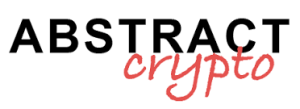Russia has recently launched a pilot project for a digital gold system aimed at revolutionizing international trade. This innovative approach could redefine the landscape of global economic transactions, positioning Russia as a key player in the cryptocurrency and blockchain sector.
Russia: a new chapter for international transactions thanks to digital gold
The Russian initiative aims to create a system of regulations based on digital gold, an asset that is gaining popularity as a safe and stable alternative to traditional currencies. This system could facilitate international transactions while reducing the risks associated with currency fluctuations. Digital gold could serve as a store of value, similar to how Bitcoin has been defined as “digital gold” by the United States Treasury.
The pilot project, developed by Russia, involves the use of a blockchain system to manage and record digital gold transactions. This system will ensure transparency and security, two fundamental pillars for gaining the trust of international investors. The blockchain, in fact, offers an immutable ledger that can be verified in real-time by all parties involved, thus reducing the risk of fraud and manipulation.
Economic and Strategic Implications
The adoption of a digital gold system for international settlements could have important economic and strategic implications. On one hand, Russia could strengthen its global economic position by offering an alternative to the dominance of the American dollar. On the other hand, it could represent a step towards greater economic independence, reducing reliance on Western financial infrastructures.
If the pilot project is successful, it could pave the way for a wider adoption of digital gold as an international settlement tool. This could lead to greater integration of blockchain technologies into the global financial system, promoting further innovations in the criptovalute sector.
Conclusion
The launch of the digital gold system in Russia represents a significant step towards the modernization of international transactions. This project not only underscores the growing importance of cryptocurrencies and blockchains, but it could also mark the beginning of a new era for global economic regulations. It remains to be seen how this system will impact the global market and whether other nations will follow the Russian example. How will the global economy evolve with the integration of digital gold?


